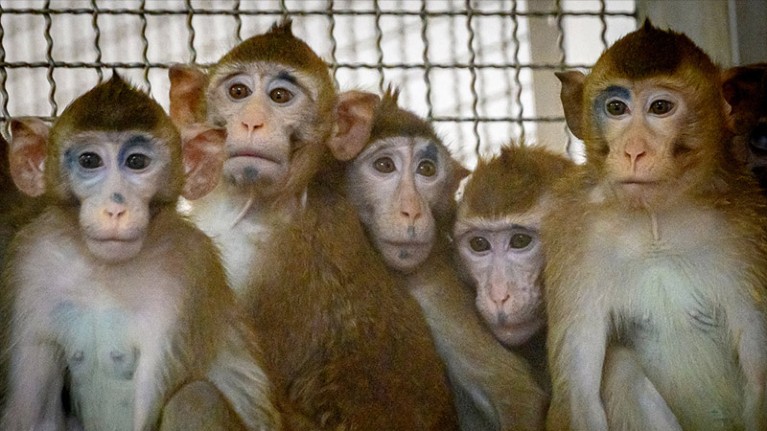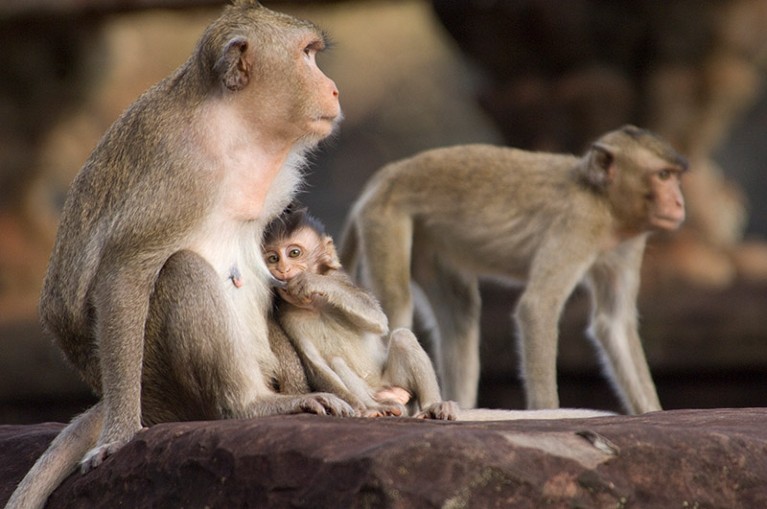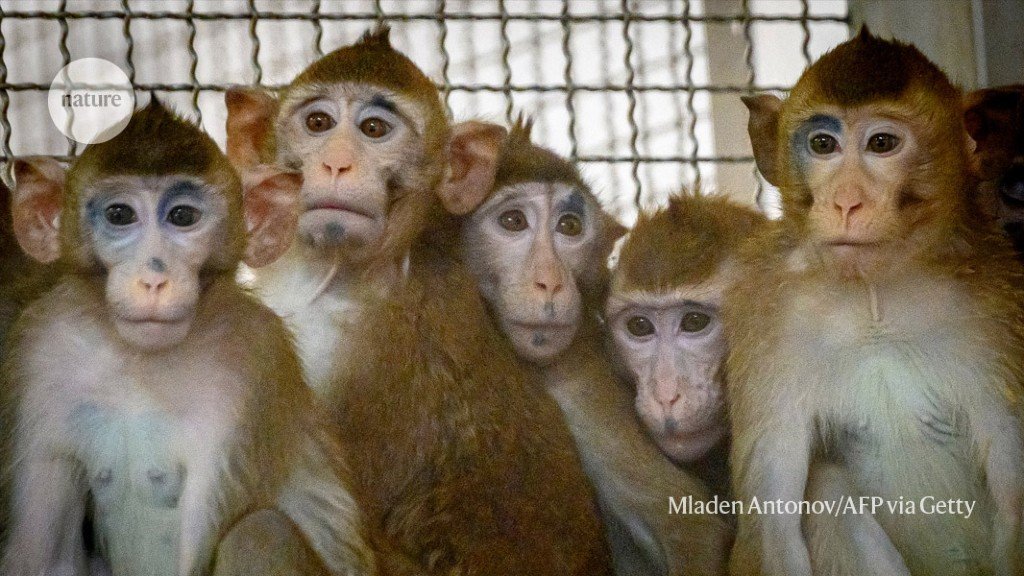
Since the COVID-19 pandemic in 2020, the supply of research monkeys has been low.Credit: Mladen Antonov/AFP via Getty
In 2019, immunologist Jonah Sacha received a shipment of monkeys for his research into infectious diseases. But while conducting preliminary chest X-rays, Sacha found one monkey that stood out for all the wrong reasons: it was carrying the bacterium that causes tuberculosis (TB).
The infected animal rendered the entire shipment of 20 monkeys unusable for research because of the risk that the infection would spread. “We lost all of those animals,” says Sacha, who investigates stem-cell transplants as a treatment for HIV at the Oregon Health & Science University’s Oregon National Primate Research Center in Beaverton. “That cost hundreds of thousands of dollars of damage and delayed our research by many years.”
In a lot of ways, Sacha was lucky that he detected the diseased monkey: if it had made its way into a medical trial, it could have confounded the results, says Ricardo Carrion, a microbiologist at the Texas Biomedical Research Institute’s Southwest National Primate Research Center in San Antonio.
Sacha doesn’t know how the monkeys got TB — research monkeys are typically captive-bred, which should guarantee that they are free of diseases. But the risk of disease is a growing concern among scientists who work with monkeys; news reports suggest that some laboratory monkeys are being illegally poached from the wild, falsely labelled as captive-bred and sold as research animals, a practice known as monkey laundering.
Monkey business
Long-tailed macaques (Macaca fascicularis), or cynomolgus macaques, make good models for infectious-disease research and vaccine development because they are genetically and physically similar to humans. Biomedical researchers use captive-bred primates that are free from certain types of virus, bacterium and parasite.
Over the past two decades, China has been the biggest exporter of research macaques, with the United States in particular relying heavily on its supply. But at the onset of the COVID-19 pandemic in 2020, China halted the export of macaques and other wildlife to reduce the potential spread of the disease. “It really put a pinch on the availability of these animals,” says Carrion.
In the wake of the pandemic, the global supply of good-quality research monkeys remains at an all-time low. In May, a report from the US National Academies of Sciences, Engineering, and Medicine found that more than half of researchers surveyed had experienced problems obtaining primates for their research in 2021. The report also found that researchers are waiting longer now than before COVID-19 hit to procure research macaques, and that the cost per animal has skyrocketed. Before the pandemic, a single long-tailed macaque cost between US$7,500 and $8,500, says Carrion. But now, they can fetch around $55,000.
The huge demand for research monkeys and their rising costs have created a market for monkey smugglers, says Anne-Lise Chaber, a veterinary physician who has researched illegal wildlife trade at the University of Adelaide, Australia.
Evidence of this trade is slowly coming to light. In November 2022, eight people — including two wildlife officials from Cambodia — were charged with smuggling hundreds of wild long-tailed macaques from Cambodia to the United States for use in research; the animals were allegedly labelled as captive-bred. It’s not clear whether any of them ended up being used in research.
Chaber says that, since China’s export ban, Cambodia has stepped up as a major exporter of research monkeys. She and her colleagues published a study in June1 estimating that macaque exports from Cambodia increased from around 10,000 in 2018 to a total of 30,000 in 2019 and 2020. Such a jump would be impossible without resorting to poaching, smuggling or a reliance on unaccredited breeding farms, because the current number of registered breeding females could not produce so many offspring, she says.

There has been a sharp increase in illegally traded research monkeys.Credit: Shawn Ray Harris/Getty
Confounding results
Apart from the ethical and legal problems with smuggling wild monkeys into medical trials, the practice could also invalidate study results. Wild monkeys have already been exposed to a cocktail of diseases, says Carrion. That means that, in vaccine studies, they would produce a very different immune response from animals that have been purpose-bred in sterile facilities.
In some cases, viral infections suppress monkeys’ immune systems, which would hinder their response to experimental vaccines, says Malcolm France, an independent veterinary consultant specializing in the care of animals used in medical research, based in Sydney, Australia.
Some retroviruses — a group that includes HIV — can alter the immune system even when they don’t cause obvious illness. For instance, the common but often symptom-free simian T-lymphotropic virus triggers cells to release high levels of cytokines, proteins that regulate the immune response. Such changes make it almost impossible for researchers to disentangle the effects of a drug that they might be testing from those caused by a viral infection.
Another retrovirus, simian foamy virus, can destroy cell membranes, making it difficult to maintain cultures of cell lines from infected monkeys. This would hamper research into infectious-disease mechanisms, such as those by which viruses replicate inside cells.
And viruses aren’t the only pathogens that can cause trouble in the lab. Lung mites (Pneumonyssus simicola), tiny parasites that infect wild monkeys, cause rash-like lesions in the respiratory system, which can be confused with those caused by other illnesses.
Keeping smuggled wild monkeys in captivity would also cause the animals a lot of stress, says France. This can lead once-dormant infections to erupt into full-blown disease. “Aside from the obvious welfare impact, this also imposes uncontrolled variables that can profoundly compromise the validity of experimental data,” says France.
Global supply
Putting a halt to monkey laundering is not straightforward, says Astrid Andersson, a conservation biologist who specializes in the wildlife trade at the University of Hong Kong. Every year, thousands of macaques are legally traded for research. Such trade makes it easy for smugglers to slip through the cracks. When there are large numbers of animals being traded legally, “it can easily provide a cover for illegally procured wildlife to be laundered”, says Andersson.
Chaber says that research institutions should inspect the facilities from which they acquire research monkeys, to ensure that the animals are bred in line with regulations. She adds that facilities also need to be audited regularly to catch any suspicious activity.
Carrion says that genotyping research monkeys would help facilities to keep track of where they have come from. Working with captive-bred animals that are well-understood and properly managed is better for everyone. “We know [through] doing experiments that healthy, happy animals result in the most consistent data.”



